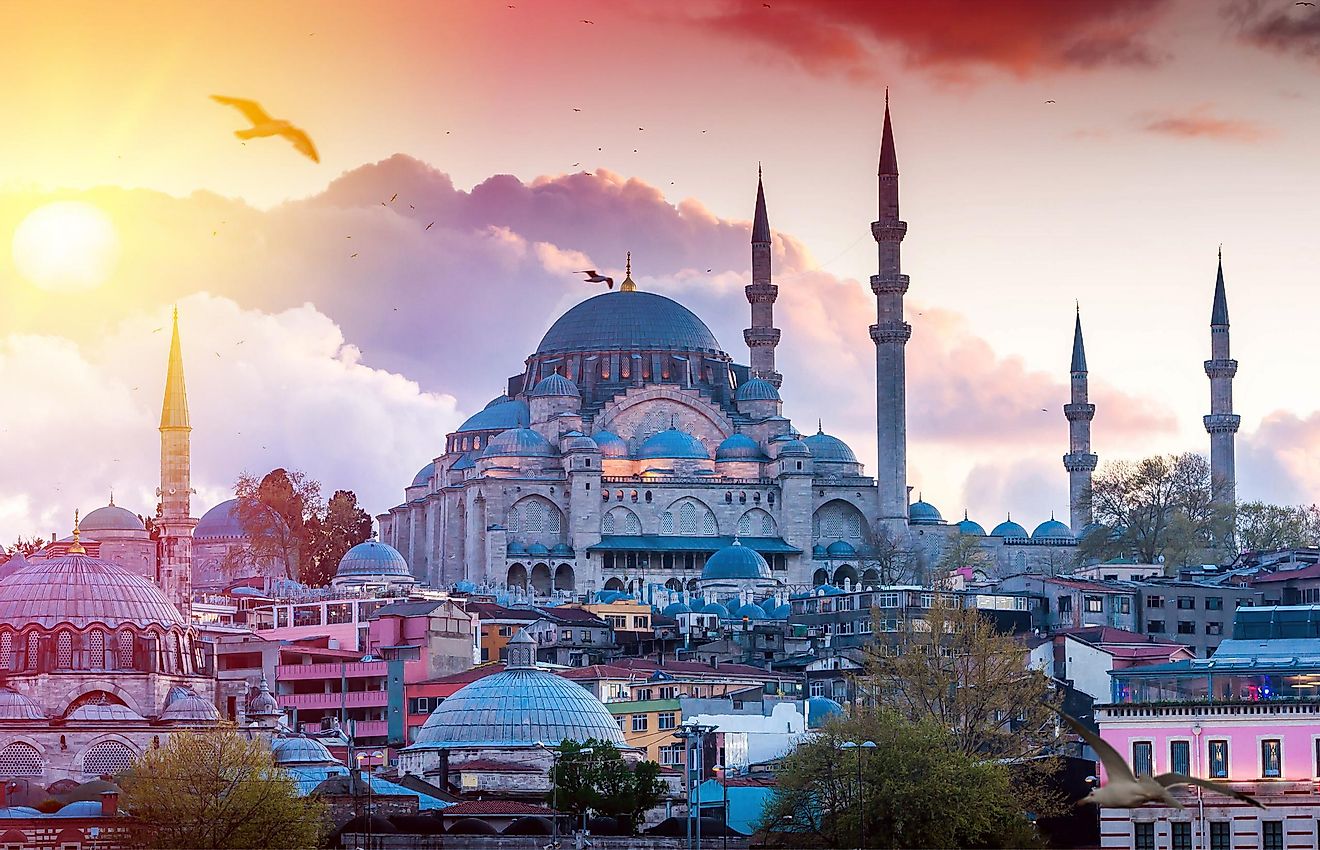Which City Is in Two Continents?

Istanbul, previously known as Constantinople and Byzantium, is a transcontinental city in Eurasia (Europe and Asia) which dates back to 660 BCE. Although not the capital, Istanbul is the cultural, economic, and historic center of Turkey, and the nation's most populous city. Istanbul is a historic city that continues to honor and preserve its legacy as a former capital of three empires: Roman Empire, Byzantine Empire and Ottoman Empiure. In addition to the city’s historical heritage, it also offers modern facilities and continues to project future developments.
Geography
Istanbul spans the Bosphorus Strait, between the Black Sea and the Sea of Marmara. The Bosphorus Strait separates Europe and Asia and connects the Black Sea to the Sea of Marmara. The European side of the city, Thrace, is the economic and historic hub, while Anatolia is the Asian side of the city. Nationally, the city is located in the Marmara Region in the northwestern part of Turkey, covering an area of 2,063 square miles. Istanbul is close to the boundary of Eurasian and African Plates, near the North Anatolian Fault that has been responsible for many earthquakes throughout Istanbul's history.
City Architecture
Istanbul has several examples of historical Roman, Byzantine, and Ottoman architecture, and is a listed as a UNESCO World Heritage Site. This city’s building acts as a timeline representing the various cultures and empires that have lived in the area. The Dolmabahçe Palace, used during the Ottoman Empire, serves as the seat of government. Another historic building, the Topkapı Palace built in the fifteenth century, is now a museum. Remaining Roman Architecture includes the obelisk (fourth century) and the Column of Constantine (330 CE). Surviving examples of Byzantine architecture include the Church of the Saints Sergius and Bacchus, the Monastery of Stoudios, Chora Church, Pammakaristos Church, and the Hagia Sophia. Examples of Ottoman architecture include the Anadoluhisarı and Rumelihisarı fortresses, Süleymaniye Mosque, Nuruosmaniye Mosque, Bayezid Mosque, Fatih Mosque, Yavuz Selim Mosque, Sultan Ahmed Mosque, and Yeni Mosque.
Demographics
In 2015, Istanbul had a population of 14,657,434, with approximately 98% of the metropolitan area inhabitants living within the city limits. 65% of the population lives on the European side of the city and the remainder live in Asia. The city’s population is growing at 3.45% annually, a figure that mirrors the rate of urbanization in Turkey. Only 28% of city residents are originally from Istanbul. The majority of the population is Muslim, particularly Sunni Islam, while the largest Christian denomination is Eastern Orthodox. There are many ethnic minority groups, the largest being the Kurds, which has a population between two and three million people. Other significant minority immigrant groups include Bosniaks, Jews, and Levantines. Due to recent cooperation between Turkey and many African states, the number of young Africans from Somalia, Djibouti, Nigeria, and Congo in the city is growing annually.
Climate
Due to the city’s location within a transitional climate zone, the Koppen Classification indicates that Istanbul has a borderline humid subtropical climate (Cfa), Mediterranean climate (Csa), and oceanic climate (Cfb). The city's climate is further complicated by the existence of several microclimates because the city has coastlines on two unique water bodies. Parts of the northern side of the city indicate climates characteristic of oceanic and humid subtropical climates. Due to this high humidity, fog is common in the mornings. The southern part is relatively drier, warmer, and less humid. Precipitation is also higher in the northern part, which receives 1166.6 mm annually, while the southern part of the city receives an average annual rainfall of 635.0 mm.







